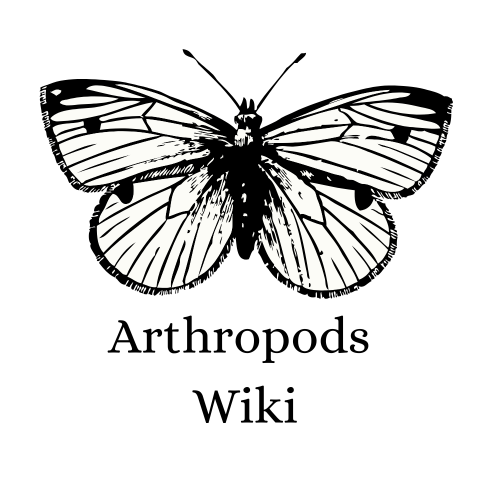
Sphaerotheriida (from the Latin sphaerium = ball) is an order of millipedes[1] in the infraclass Pentazonia,[2] sometimes known as giant pill millipedes. They inhabit Southern Africa, Madagascar, South and Southeast Asia, Australia and New Zealand.[3] Like the Northern Hemisphere pill millipedes of the order Glomerida, these millipedes can roll into a ball when disturbed. When they are rolled-up, most sphaerotheriidans reach a maximum size of a cherry [4] or golf ball,[5] but some species from Madagascar can even reach the size of an orange[6] (an example of island gigantism). When rolled-up, predators are unable to unravel giant pill millipedes since the margins of their second and last dorsal plates fit perfectly into one another, creating a sealed ball. A few giant pill millipede species are able to produce sound, the only millipedes known to do this.[7] This order of millipedes is also unique in that some African species are used for medicinal purposes
Morphology[]
Sphaerotheriidans are characterized by a relatively conservative body morphology; superficially all species and genera look the same.[3] Dorsally, their head is followed by twelve body tergites (collum, thoracic shield, and ten normal tergites) and the anal shield. Ventrally, females possess twenty-one leg pairs (forty-two legs in total), while males carry two additional modified leg pairs, the anterior and posterior telopods under their anal shield. The telopods resemble chelae and/or clamp-like structures, which are probably used in holding the female during mating.[3] In the position of the male telopods, the females instead have a sclerotized subanal plate, which in some species such as those belonging to the family Arthrosphaeridae, is enlarged and is used to produce vibrations (stridulation).[3] Furthermore, unlike other large-bodied millipede orders, Sphaerotheriida do not have glands that excrete poisonous or ill-smelling substances. Instead they depend entirely on their rolling-up behavior for protection.
Sphaerotheriida somewhat resemble the North American and Eurasian pill millipedes of the order Glomerida, but are generally larger in size (20–80 millimetres or 0.8–3.1 inches body length). Until the end of the 20th century only the largest known species in the order Glomerida rivalled the size of even the smallest known Sphaerotheriida, but in the early 21st century a much smaller Sphaerotheriid was described from Madagascar: full-grown specimens of Microsphaerotherium ivohibiensis are just the size of a pea.[9] Also on Madagascar, some giant pill millipede species exhibit island gigantism, reaching more than 9.5 cm (3.7 in) in outstretched length and a size comparable to an orange when rolled up.[6]
The orders differ in the number of tergites (10 or 11 in Glomerida, 12 in Sphaerotheriida) and legs (17 or 19 in Glomerida, 21 or 23 in Sphaerotheriida), and show great differences in their head morphology and genital openings, among other traits.[10]
Both orders have the ability to roll into a perfect ball, protecting the head, antennae, and the vulnerable underside. However, this rolled-up position (volvation) is achieved differently. In Glomerida, the enlarged second body ring (thoracic shield) has a more or less visible gap within which fit the tips of tergites 3–11, whereas in Sphaerotheriida the tips of tergites 3–12 fit perfectly into a groove on the thoracic shield. Juvenile sphaerotheriidans show the same gap as the Glomerida.[11] Many giant pill millipede species have special ledges ('locking carinae') on the underside of the tergite tips and the anal shield which can be moved above a brim on the thoracic shield. These millipedes remain passively locked-up since they need not continued muscle contraction to remain in the rolled-up position.
Distribution[]
In general, Sphaerotheriida have a Gondwanan distribution (the exception is Zephroniidae from southeast Asia and adjacent regions).[3][12] Gondwana was the large southern continent that formed after the breakup of the supercontinent Pangaea.[13] It included the modern-day landmasses of South America (which however lacks sphaerotheriidans), New Zealand, Australia, India, and Madagascar. It is believed that the Sphaerotheriida originated in Gondwana and then diverged into its various forms.
Sphaerotheriida is divided into four families whose distributions do not overlap: Procyliosomatidae, Zephroniidae, Sphaerotheriidae and Arthrosphaeridae. The most basal family, Procyliosomatidae, lives in Australia and New Zealand.[3][14] The Zephroniidae (synonym Sphaeropoeidae) occurs in southeast Asia from the Himalayas and China south and east to Sulawesi and inhabits some Philippines islands.[3] The family Sphaerotheriidae only occurs in South Africa with isolated populations in Zimbabwe and Malawi (probably introduced).[5] The Arthrosphaeridae are distributed in southern India and Madagascar.[3]
A few giant pill millipede species have been dispersed by humans, probably inadvertently. Examples include the Sri Lankan Arthrosphaeridae species Arthrosphaera brandtii which has established a population in the Usambara Mountains, Tanzania,[15] as well as some South African Sphaerotherium species which have isolated populations in Malawi.[16] Another likely candidate is Sechelliosoma forcipatum, a small species of the southeast Asian family Zephroniidae, currently only known from a single island in the Seychelles.
